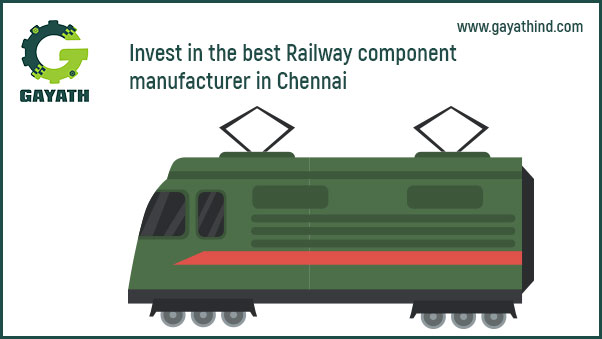
Invest in the best Railway component manufacturer in Chennai
Invest in the best Railway component manufacturer in Chennai
As the demand for mass transportation grows, it has become important to ensure the safety and security of passengers.
The top Railway component manufacturer in Chennai offers couplers that allow locomotive vehicles to connect instantly. Such high-end products are designed to connect without human intervention. The best accessories offer safe and secure mechanical and pneumatic connections between vehicles. The right quality products and accessories for railways must also aid in energy absorption. This helps to give maximum protection for both the vehicle and the passengers.
Seeking a top Railway component manufacturer in Chennai
Railways have become an effective mode of transportation for the masses, especially for intercity commutes. The journey is quick and affordable which makes it a favorite of routine travelers and vacation enthusiasts.
Indian Railways is the fourth largest railway network in the world. It is next only to top nations like the USA, China, and Russia. It already spans over 45k kilometers through an electrified railway system. It is also a significant railway network operated by any government.
The Railways use a fleet of electric and diesel engines and are looking for a switch to sustainable options like CNG, etc.
Need for top Railway component manufacturer in Chennai
Investing in the right Railway component manufacturer in Chennai helps to reduce the chances of accidents due to poor connections. Such fastening systems are designed to ensure effective transportation and movement minus friction.
Often common components of the fastening process include –
- Rail clips
- Rail shoulder
- Rail tie plates
- Railroad spikes
- Rail bolts
- Rail pads
- Washers
- Dowels
- Rail insulator, etc.
The critical function performed by such couplings is to overcome the steel rail from horizontal and lateral movements. It also absorbs and then transfers the pressure of the entire carriage to the railway sleeper.
Type of couplers used by Indian Railways
Although there are a huge range of couplers yet fully automatic couplers connect the vehicles using electrical and pneumatic connections. This is often achieved by pushing two carriages together and then using a foot pedal or button to complete the process.
For uncoupling, another button or pedal is used to disconnect. This decouples the electrical and pneumatic connections to disengage the same mechanically. Such systems are quite complex and need careful consideration and manufacturing to ensure optimal results.
Indian Railways adopts side buffers and screw couplings to manually create a connection. The Alsthom coaches carry center-buffer-coupler or CBC couplers. Apart from this, the organization uses transition couplers that use a CBC coupler to attain effective connections with other couplers. These can also be coupled to wagons without a CBC coupler.
A semi-permanent coupling called Schaku Coupling is also used in EMUs. Here a manual process is undertaken and two couplers are joined using an adjustable cup sleeve joint. Using the process of manual coupling, the air pipe establishes the connection between two coaches automatically. These pivot joints are designed in a way that the coaches can navigate track curves and negotiate track curves while passing through points of change during the service.
Opting for railway components from Gayath Heavy Engineering Private Limited
Leading manufacturers like Gayath Heavy Engineering Private Limited manufacture components critical to maximizing safe travel. The same offers high-quality couplers that allow vehicles to connect immediately with zero human intervention. This makes it a safe choice for the industry.
This is designed to offer a reliable mechanical and pneumatic connection between two vehicles. These are manufactured in a way to optimize energy absorption and offers maximum protection to the vehicle and passengers.
